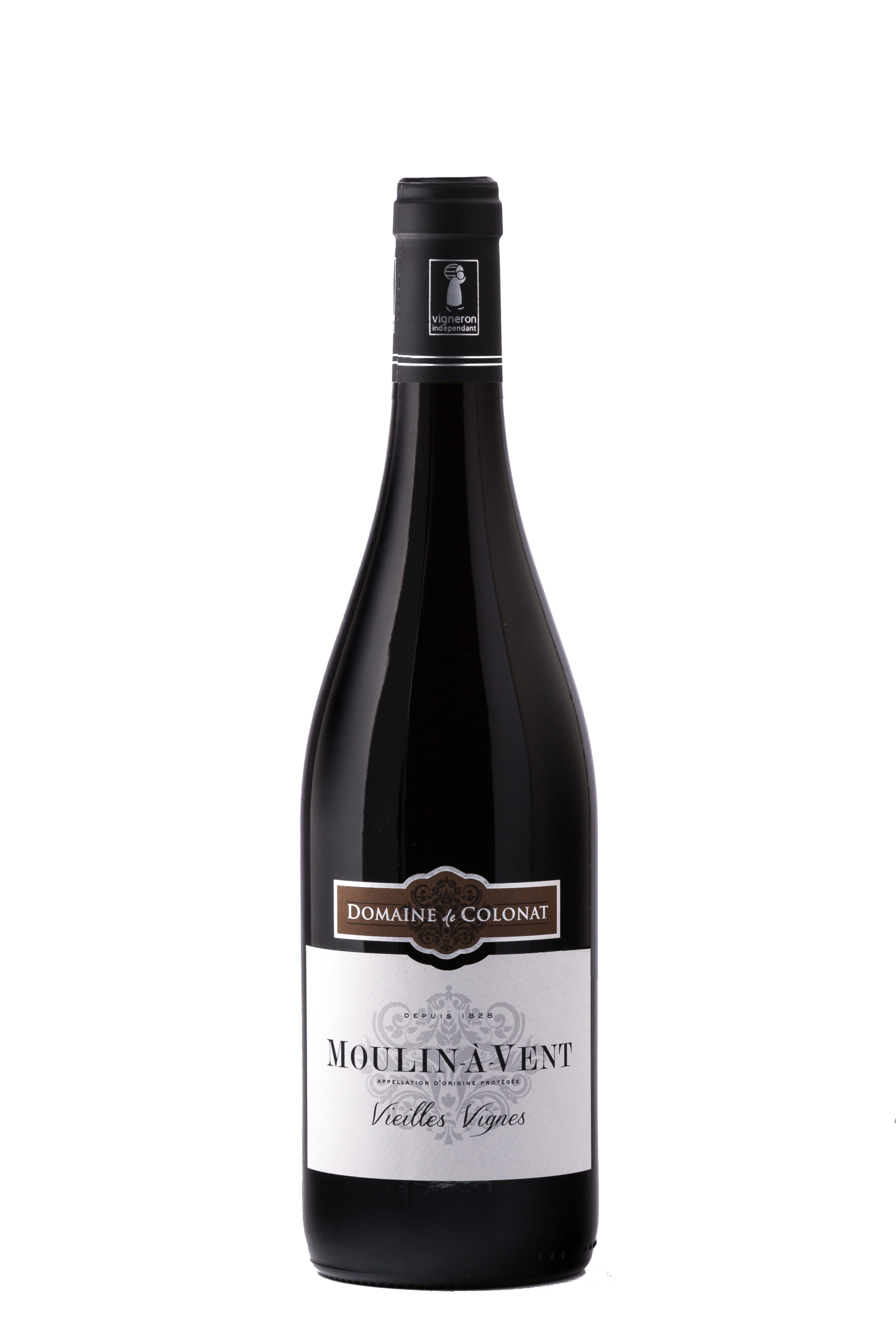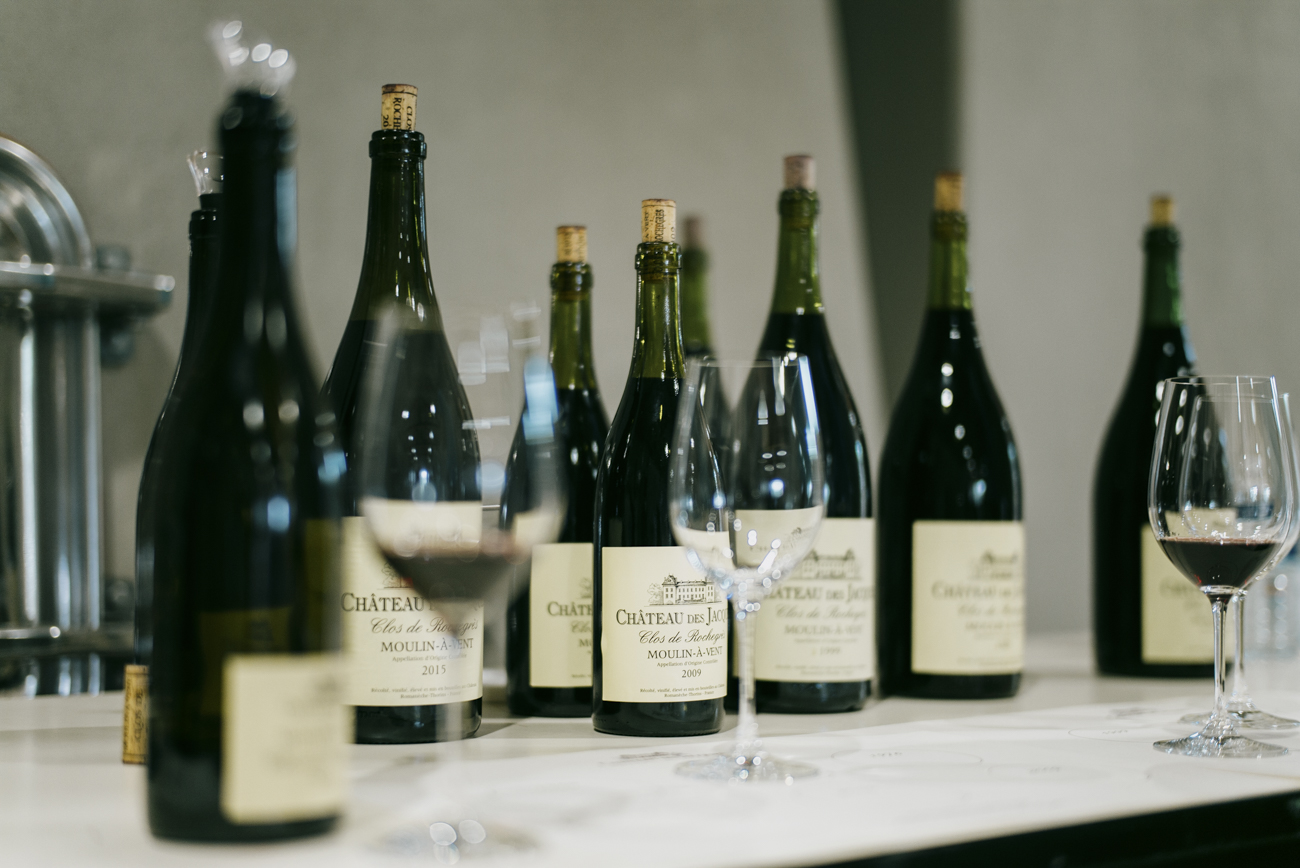
Pissevieille, Côte du Py, La Madone, Champ de Cour… Have you ever noticed these names on bottles of Beaujolais crus? Whether you are familiar or not with the notion of ‘vins de lieux’, or ‘site-specific wines’, we are going to explain what it means, at a time where several crus are hoping to see the emergence of Beaujolais Premiers Crus.
Are some Beaujolais wines on their way to gaining recognition as Premiers Crus? This is in any case the path some of the vineyards’ ten crus have taken. Lieux-dits – literally “said-names” – are geographical areas recognised in the land register and have been recorded on maps for more than two centuries. Now, winegrowers are seeking recognition for these special terroirs. Will they go as far as to be classified as Premiers Crus? Let’s take a look at this lengthy undertaking, the progress of which varies from one cru to another.
Beaujolais : a vineyard made of crus and lieux-dits
Does “lieu-dit” and “premier cru” mean anything to you ?
Firstly, what are lieux-dits and what does Premier Cru mean? When it comes to wine, lieux-dits are specific registered terroirs within the appellation. There are almost 600 in the Beaujolais cru area alone and each one produces its own distinctive cuvées. An increasing number of winegrowers mention them on their labels. A Premier Cru is a step above crus in the hierarchy of wines and is recognised as an exceptional terroir with regulated practices.
A mosaic of soils in the beaujolais region
While the variety of soils found across the Beaujolais vineyard has not escaped the notice of winegrowers past and present, a veritable mosaic of soils was brought to light in 2018. An unprecedented study – which took 9 years to complete – revealed more than 300 types of soil from the 15 main types of rock. So it’s hardly surprising that Beaujolais wines are so different, not just from one AOC to another, but also from one lieu-dit to another.
Age-old lieux-dits
The lieux-dits found in the 12 appellations are part of the Beaujolais region’s winegrowing history. ‘Carriers of history’ still tell stories about these places named after a historical event, a family or even a natural feature of the landscape. Some lieux-dits are even mentioned on old maps, labels or harvest declarations… The 1869 Budker map for example identified no fewer than 200 lieux-dits! In other words, the plot-by-plot approach used in the Beaujolais region is nothing new.
Why does the Beaujolais vineyard want its own premiers crus ?
The plot-by-plot approach, an integral part of the Beaujolais region’s identity
Whether they are introducing their ‘lieux-dits cuvées’ or naming their bottles after them, an increasing number of Beaujolais winegrowers, like their ancestors, are using a plot-by-plot approach. Aware of the variability of the soils they work on and determined to offer unique ranges of wines, they create cuvées and even micro-cuvées to reveal the potential of each lieu-dit. Some people call these wines ‘vins de lieux’.
Premier cru : a move upmarket driven by winegrowers
It is the winegrowers of each appellation themselves who are behind this project to recognise some wines as Premiers Crus. Their motivation? The desire to see the remarkable lieux-dits of the Beaujolais region fully appreciated and their specific characteristics fully acknowledged. As the presence of Premiers Crus is a guarantee of quality for the entire vineyard, it is the Beaujolais region as a whole that will gain recognition for its move upmarket.

Is Beaujolais on a path towards premier cru recognition ?
How do you choose the lieux-dits that could be put forward for premier-cru recognition ?
Winegrowers selected the lieux-dits that are likely to become Premiers Crus using a method approved by the National Institute of Origin and Quality (INAO). To justify these potential upgrades, the institute requires the following criteria to be taken into account:
- claims : do the winegrowers already mention the lieu-dit on their bottles and do they make it known during harvest time?
- past reputation : are there references to the lieu-dit in the archives (maps, books…)?
- current reputation: are they mentioned in guides, magazines competitions?
- tastings: does the lieu-dit have specific characteristics compared to the generic appellation? Which ones?
- value: does mentioning the lieu-dit add value to the bottle? Does it highlight the particular attention the winegrower paid to the cuvée? In other words, is a “lieu-dit” cuvée economically valued?
These criteria are used to rank the lieux-dits and ultimately select those with the highest scores and put them forward for the recognition.
Premier cru means regulated practices
So, what does recognition as a Premier Cru mean? Moving upmarket involves adopting more restrictive practices than those used for the rest of the appellation. Some examples? Among other things, Premiers Crus require lower yields during harvest time and longer ageing periods for the wines.
In order to standardise procedures, a set of basic Premier Cru specifications have been established. They are based on the practices described by winegrowers from each appellation. The crus put forward for a potential upgrade are welcome to go further.

Fleurie, Brouilly and Moulin-à-Vent, premier cru applicants
How are the ten crus doing ?
The ten crus have always showcased their terroirs, but it is only since 2019 that they have embarked on this joint mission to gain recognition for their lieux-dits, in order to more precisely define each terroir.
This undertaking may eventually lead to some of them gaining recognition as Premiers Crus. This will soon be the case for Fleurie, Brouilly, Moulin-à-Vent, Côte de Brouilly and Juliénas. For the remaining five, data collection continues.
The lieux-dits put forward for premier cru recognition
It was the Fleurie winegrowers who first applied for Premier Cru recognition. They were followed a few months later by those from Brouilly and Moulin-à-Vent. They adopted the INAO procedure in order to draw up a list of lieux-dits to be showcased. The applicants for the Premier Cru title selected at the General Assembly are:
- 7 lieux-dits in the Fleurie cru: Grille Midi, La Chapelle des Bois, La Madone, La Roilette, Les Garants, Les Moriers, Poncié
- 16 in the Brouilly cru: Briante, Combiaty, Combiliaty, Garanches, La Chaize, La Martingale, La Perrière, La Terrière, Les Maisons neuves, Marquisat, Pierreux, Pissevieille, Reverdon, Saburin, Saint Pierre, Voujon
- 14 in the Moulin-à-Vent cru: Au Michelon, Aux Caves, Carquelin, Champ de Cour, Chassignol, La Roche, La Rochelle, La Tour du Bief, Moulin-à-Vent, Les Perrelles, Les Rouchaux, Les Thorins, Les Verillats and Rochegrès.
And now ?
While the bulk of the work has already been done by the winegrowers, the Fleurie, Brouilly and Moulin-à-Vent crus are only at the beginning of the process. The application submitted by Fleurie is being assessed by the INAO, while those of Brouilly and Moulin-à-Vent are being finalised.
The body in charge of the original appellations begins its assessment once the applications have officially been submitted. This can take more than ten years and the INAO can make many adjustments. So, we have to be patient, it may take some time before we see the first Beaujolais Premiers Crus!

The steps towards recognition as a premier cru
- 2009 – 2018: unprecedented study to characterise the Beaujolais terroirs carried out by the Sigales pedological study agency
- 2017: launch of a joint project by the 10 crus to move upmarket
- April 2019: creation of a work method to determine the lieux-dits to be put forward for Premier Cru recognition
- 2019 – 2024: survey of practices, creation of files for the lieux-dits, monthly tastings organised by each cru
- 28 March 2023: vote during the Fleurie cru General Assembly for the 7 lieux-dits to be put forward
- 16 October 2023: vote during the Brouilly cru General Assembly for the 16 lieux-dits to be put forward
- 22 November 2023: Fleurie officially submitted its application to the INAO
- 19 December 2023: vote during the Moulin-à-Vent cru General Assembly for the 14 lieux-dits to be put forward
- In 2024: official submissions for the Brouilly and Moulin-à-Vent crus
- By 2035: official recognition of the lieux-dits classified as “Premiers Crus”
Now the lieux-dits of the Beaujolais region and their potential to become Premiers Crus hold no secrets from you.
With this project to move upmarket, the ten crus both acknowledge that there is a treasure trove under the Beaujolais vineyard and share a common goal: to more precisely define each terroir.
This reappropriation by winegrowers of their lieux-dits is already changing the face of the Beaujolais vineyard.





























